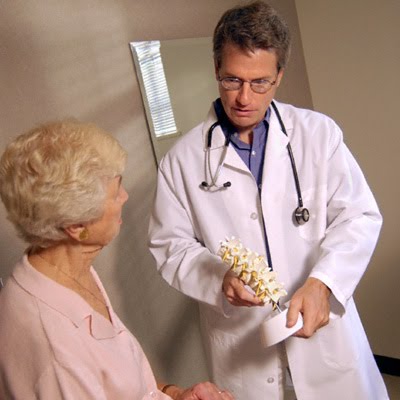
Special to the Star-Telegram
Too many women don’t get treated for common conditions because they don’t recognize the symptoms.Tired, forgetful, sensitive to cold? that could mean an underactive thyroid. Have a pain under the right breast along with nausea and vomiting? that could indicate gallstones.Not only do these medical problems afflict women more frequently than men, so do heart attacks and strokes — often overlooked and left untreated by women because the symptoms are different from men’s.Here’s a look at some of the issues doctors would like women to know more about.Heart attacks and strokesMore women than men die from cardiovascular disease at age 35 and beyond, according to the Texas Department of State Health Services. In addition, more than 1 in 3 women has some form of cardiovascular disease. It’s the No. 1 health threat to women, causing more deaths nationally than all types of cancer combined, according to the American Heart Association.because women don’t recognize the signs, they may wait longer to seek treatment. the warning signs in women are:for stroke: Sudden numbness or weakness of the face, arm or leg, especially on one side of the body; sudden confusion, trouble speaking or understanding; sudden trouble seeing in one or both eyes; sudden trouble walking, dizziness, loss of balance or coordination; sudden, severe headache.for heart attack: Discomfort in the center of the chest that lasts more than a few minutes, or that goes away and comes back, that feels like uncomfortable pressure, squeezing, fullness or pain; discomfort in other areas of the upper body, including pain or discomfort in one or both arms, the back, neck, jaw or stomach; shortness of breath; nausea, lightheadedness or breaking out in a cold sweat.What to do: the heart association suggests that up to 80 percent of cardiac events in women could be prevented if women eat a healthy diet; keep weight, blood pressure, cholesterol and blood sugar under control; don’t smoke; exercise at least 30 minutes a day; and get regular medical checkups. the heart association also recommends that women over age 65 take a low-dosage aspirin, in consultation with a physician.To reach the Dallas chapter of the American Heart Association, call 214-748-7212, or visit goredforwomen.org.Thyroid problemsMillions of Americans have thyroid diseases, and most of them are women, according to MedlinePlus, a service of the U.S. National Library of Medicine. the thyroid is a butterfly-shaped endocrine gland in the neck that helps set the metabolism — the rate at which your body gets energy from the foods you eat.an underactive thyroid, or hypothyroidism, is the most common thyroid disease in women. the symptoms are mild weight gain, fatigue, poor memory, constipation, dry skin, abnormal menstrual cycles and sensitivity to cold. an overactive thyroid, or hyperthyroidism, makes you lose weight, speeds up your heart rate and leaves you sensitive to heat.Not only is thyroid disease more prominent in women than men, its prevalence increases with age, says Dr. Sheila Chhutani, an obstetrician-gynecologist at Texas Health Presbyterian Hospital Dallas. That’s why women should be attentive and not brush off mild weight gain, fatigue and poor memory as caused by aging alone.What to do: Request a blood test for thyroid disease as part of your annual physical. if you do have thyroid disease, your doctor may prescribe thyroid hormone replacement in a daily pill. You often have to get tested a few times before your doctor sets the right dose.ACL injuriesWomen are more than twice as likely as men to tear the anterior cruciate ligament in their knees, according to the American Journal of Sports Medicine.although the reason has not been established, a recent study about male and female soccer players, published in the Journal of Bone and Joint Surgery, suggests that this may result from the use of different leg and hip muscles.Dr. Robert H. Brophy, an orthopedic surgeon, study author and assistant professor of orthopedics at Washington University School of Medicine in St. Louis, found that male players use muscles that move the thigh away from the body at the hip more than females do, which may contribute to the difference.”Programs focusing on strengthening and recruiting muscles around the hip may be an important part of programs designed to reduce a female athlete’s risk of ACL injury,” Brophy says.What to do: Noting the high incidence of ACL injuries in women, Baylor Regional Medical Center at Plano offers an ACL Injury Prevention Program for girls and women ages 12 and older. the six-week program, supervised by a licensed physical therapist, offers twice-weekly sessions in performance, agility, strength, speed and power. for more information, call 469-814-2550 or visit baylorhealth.com/plano.GallstonesWomen between the ages of 20 and 60 are three times likelier to develop gallstones than men, according to the American College of Gastroenterology.the gallbladder is a pear-shaped organ under your liver that stores bile, a fluid that digests fat. Gallstones form in the gallbladder when substances in bile, usually cholesterol, harden and block the flow of bile through the bile ducts.Obesity and rapid weight loss are factors in the formation of gallstones.the condition is also common among American Indians and Mexican-Americans, according to MedlinePlus.Symptoms include constant pain lasting for hours under the right breast. the pain can also radiate to the abdomen, back or right shoulder and can include nausea and vomiting. In severe cases, there may also be fever, chills and jaundice.What to do: Options can range from removing the gallstones to removing the gallbladder.
Looking for comments?